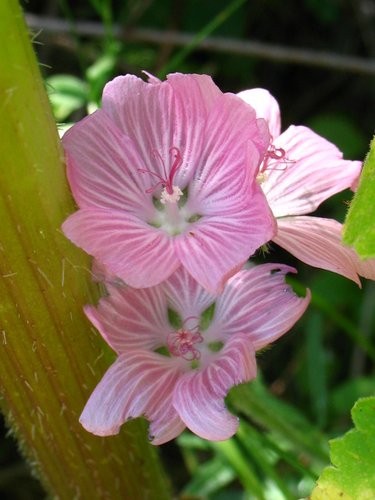Mapleleaf checkerbloom
(Sidalcea malachroides)

Description
Sidalcea malachroides, with the common name mapleleaf checkerbloom, is a flowering plant in the genus Sidalcea. The plant is native to the California Coast Ranges in the North Coast and Monterey Bay regions of California, and the Oregon Coast Range in Oregon. It grows below 700 metres (2,300 ft) in elevation. Within California it is a Vulnerable species listed on the California Native Plant Society Inventory of Rare and Endangered Plants. Sidalcea malachroides is a perennial herb or subshrub, 4–15 decimetres (16–59 in) tall. The leaves are generally all along stem. The flowers are head-like spikes, in white or pale purple-white. The bloom period is April to August. Sidalcea is a genus (approx. 25 species) of the botanical family Malvaceae. It contains several species of flowering plants known generally as checkerblooms or checkermallows, or prairie mallows in the United Kingdom. They can be annuals or perennials, some rhizomatous. They are native to West and Central North America. In mid- to late summer the clumps of toothed basal leaves produce erect flowering stems, with 5-petalled mallow-type flowers in terminal racemes, in shades of pink, white and purple. Sidalcea is generally diploid (2n = 20), but polyploidy (4n, 6n) also occurs. Annuality appears to have evolved multiple times (4+) within this genus, although an ancestral annual state with annual paraphyly is also possible. Further, evolution rates within annual Sidalcea lineages appear to be faster than those of perennial lineages, at least when examining nuclear ribosomal DNA (internal and external transcribed spacer regions).
Taxonomic tree:







